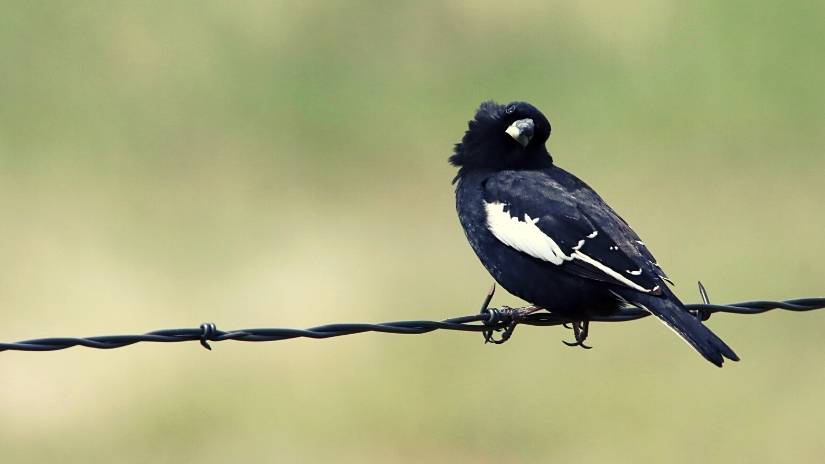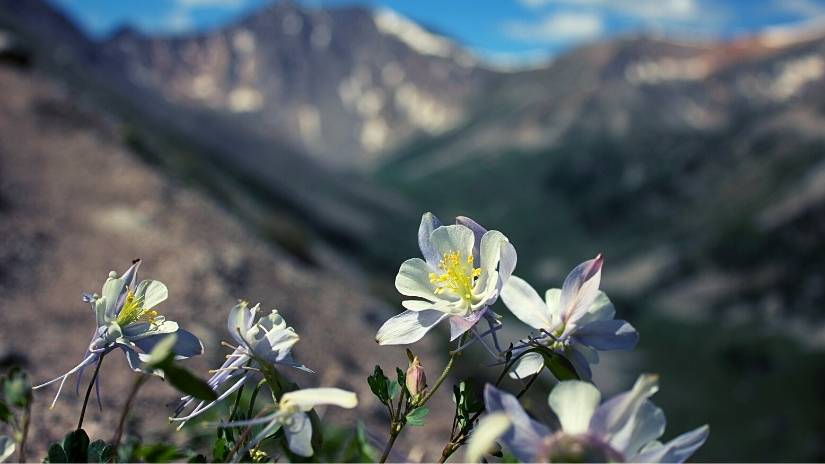State symbols are often adopted after a collaborative effort by citizens and students to have a significant item recognized for its importance to the state. States such as Colorado, and many others began to adopt some of their own official state symbols several decades ago, and in some cases, over 100 years ago. A state symbol can come in the form of state animals, birds, flowers, amphibians, nicknames, state seals, and much more.
Citizens, children, and educational institutions often research a particular symbol and make a request for a bill, tracking it all the way through the legislative process with the hope that it is enacted, and a new state symbol is announced for Colorado. Like other states, there are many Colorado state symbols. The Colorado state bird and flower are the Rocky Mountain Columbine (Columbine Aquilegia caerulea) and the Migratory lark bunting (Calamospiza melancorys Stejneger).
What is the Colorado State Bird?
The famous Migratory lark bunting became the official state bird for Colorado back in 1931. Their powerful appearance and free-spirited nature suit the spirit of Colorado exceptionally well, which is why it has not been changed in almost 100 years. The male buntings perform a courtship flight whilst showcasing their mating song.

A breeding male is typically jet black with white wings, but in the winter months, they will change to a gray/brown color, similar to the females. Despite the lark bunting being a common sparrow of the Great Plains, they have unfortunately seen some serious population declines in recent years.
How many buntings are there? Despite the seemingly steep decline in their population, these common birds still have an estimated breeding population of over 10 million and have scored a Continental Concern Score of 12 out of 20.
Fun Facts:
- The male bird is the only one in the sparrow family to completely change its plumage from distinctive breeding colors to plain colors in the winter.
- A group of buntings is called a “decoration”.
- The immature birds will get together and stay in breeding grounds for longer than the adults.
- Their song is a very soft, “hoo-ee” sounding whistle.
- They tend to sing when they are both perched and in flight.
What is the Colorado State Flower?
It was during the year 1899, over 120 years ago, when the Rocky Mountain Columbine was officially adopted as the Colorado state flower after comfortably winning the vote of Colorado’s school children.

The flower was initially discovered in 1820 on Pike’s Peak by a mountain climber named Edwin James. The Rocky Mountain columbine is a beautiful flower, with an incredibly strong scent that attracts bees from afar, also hummingbirds and butterflies. The Latin word “Aquila” translates to “Eagle”, referring to the spurs at the base of the flower resembling claws!
There are 70 species of Columbines in the world and roughly 1/3 of them are native to North America! Colorado specifies the white and lavender Rocky Mountain columbine which displays blue/violet petals and spurs, with a white cup and a yellow center. The blue represents the sky, the white represents the snow, and the yellow pays homage to Colorado’s gold mining throughout the years.
They are currently under threat from collectors who pick them for their own gardens. A law came into play in 1925 to protect this rare flower. The Colorado General Assembly made it illegal to uproot them on public property, and since then, their numbers in the wild are much more healthy.
Final Thoughts
Most states will have their symbols showcase a relevant story, that is indicative of the state and its history, and the Centennial State puts its history and what it stands for across very well in its state bird and flower.


